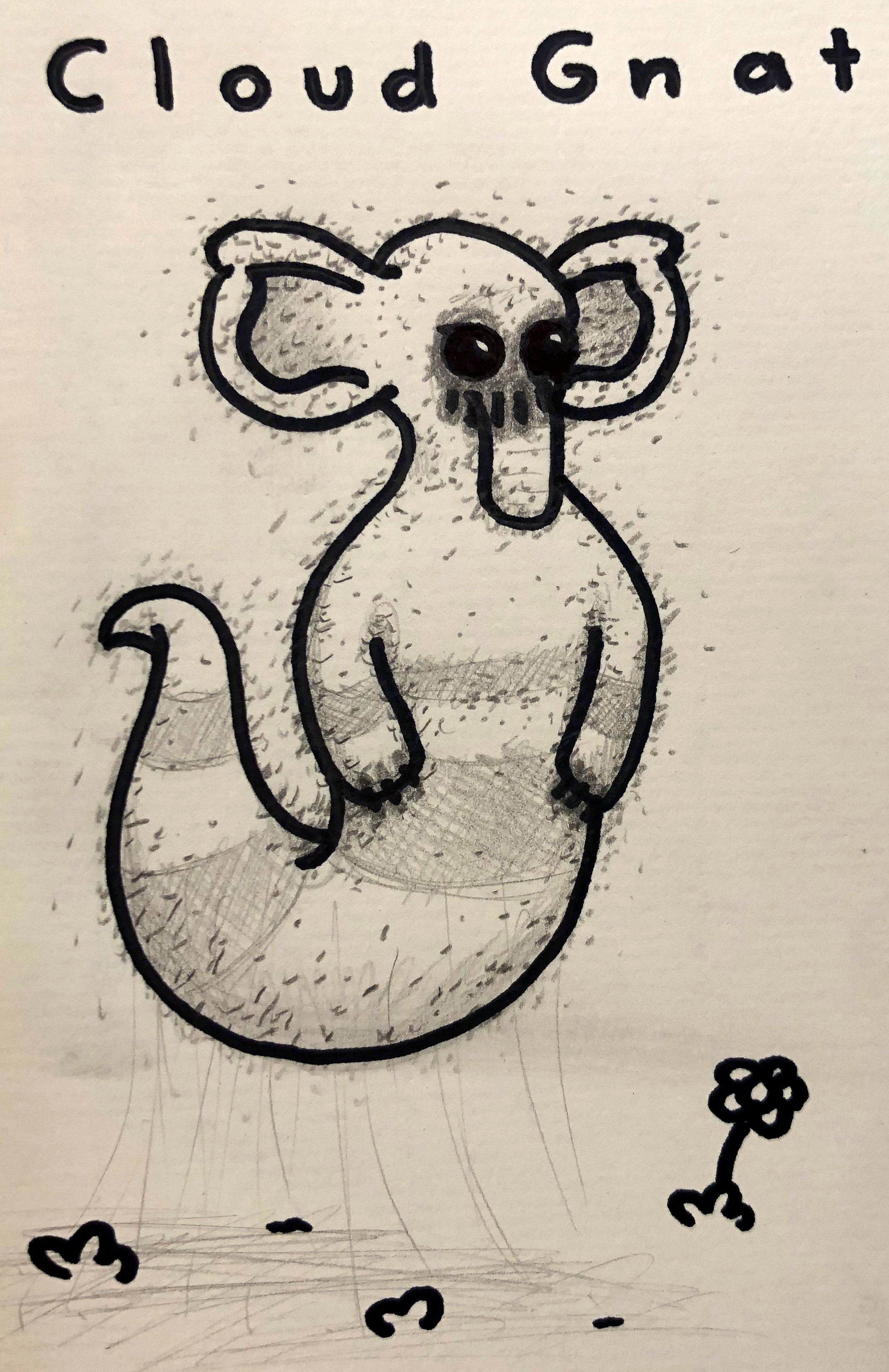Cloud Gnats
# Overview
Cloud Gnats are animal-like apparitions made of aluciferous dust. They commonly appear as small animals, standing upright with their abdomen tapering off into a wispy tail. They retain cohesion through the influence of Alucinara, but diffuse once the energy is unable to sustain cohesion.
They can pose a violent threat, as their crystalline claws or teeth can cause lacerations, infection, and a risk of phantasmarrhoea if a shard of Alucinarium were to break off in the wound.

# Appearance
Cloud Gnats appear translucent, dusty and purple, with an average length of 22cm. They take the form of animals due to the pseudo-fauna principle, with arms, a head, a torso, and a tail. In addition, they sometimes exhibit dark-purple Alucinarium crystals in the place of eyes, claws, or teeth, with a solid appearance which stands out against their bodies’ dusty material.
In addition to their dusty purple appearance, they also exhibit orange sparks of light from within and around their main body. In fact, some cloud gnats may feature floating emissive bulbs in front of where their eyes would be.
# Behaviour
While cloud gnats are not alive, they appear similar to animals and exhibit animalistic behaviour; this is because the pseudo-fauna principle affects behaviour as well as appearance. This is the root of cloud gnats’ sense of self-preservation, as they will try to retain Alucinara and attack living beings in order to replenish it.
This can pose a considerable threat due to their sharp crystalline claws, which can cause lacerations and lead to infection or phantasmarrhoea if shards broke off in the wound. Thankfully, they easily lose cohesion and don’t pose a threat when wafted away.
# Lifespan
Cloud Gnats’ lifespans can vary from under a second to days or weeks. Size is correlated with lifespan, as smaller cloud gnats will immediately lose cohesion and diffuse, and larger cloud gnats will collapse under their own weight.
A length of roughly 22cm is the most conducive for prolonged cohesion, and many cloud gnats are seen at this size.